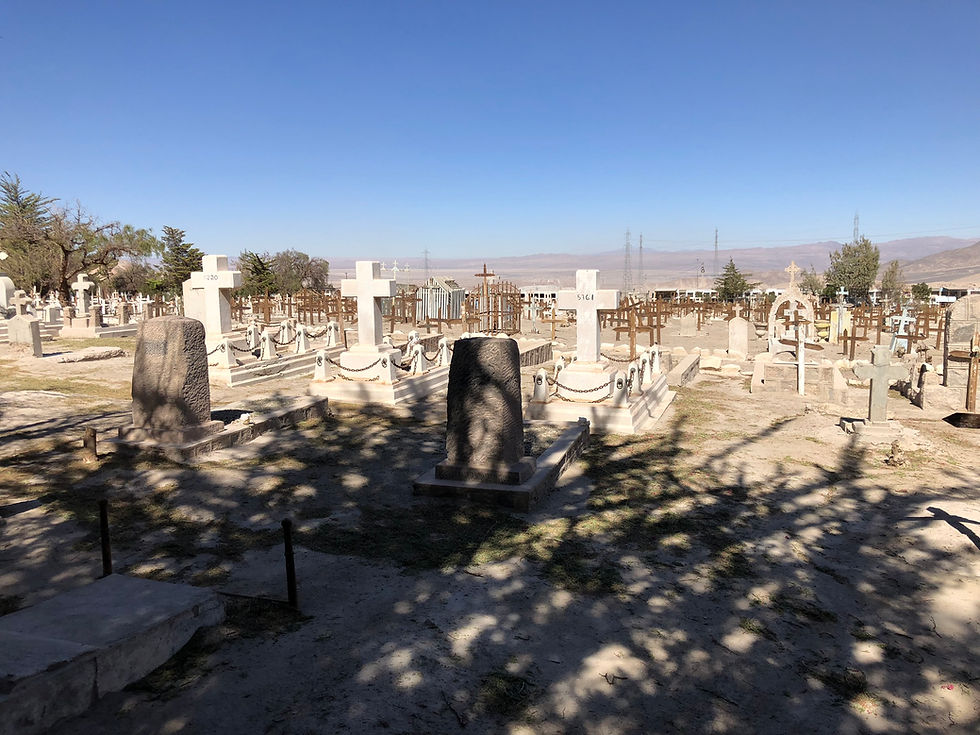It seldom hurts to pay attention to detail...
- Lipmann Walton & Co Ltd

- May 28, 2022
- 3 min read
Updated: Nov 17, 2022
More unasked for advice for the young metal merchant...
One of my many bosses (and some reading this will recognize who it is) appeared to enjoy scanning the torrent of uncontrollable contracts with a forensic eye. Occasionally, pipe in hand, he would alight on a tenth, hundredth or thousandth of a percent of a tramp element and comment on its implication.
On one occasion, in an unforgivably green period of my career, I bought Vanadium Pentoxide and assumed that as the 98.5% V205 content was roughly 100% the price I had paid was telquel. (Look it up.) Of course, I learned, that was a slapdash, ignorant, and lackadaisical assumption that could, later, lead to disaster.
1.5% appears a trifle meaningless to the ingenue. What could 1.5% of anything matter in this world? Well apparently, it does. In this case it was the difference between profit and loss on 100 mt of material. The difference on 100mt of V205 at US$ 8 per lb of material or US$8 per lb content – to be precise – was US$3306.93. I recall the incident with embarrassment because I learned from it. I learned it it is not miserly to value such details, but professional.
Channelling your inner pedant soon becomes second nature. Many years later, my daughter was travelling in Sheffield when at the end of her trip I asked her to visit a yard which had been advertising week after week in the London Metal Bulletin in the days when it was a magazine, that they had 20mt of Holmium for sale.
The truth of the matter is that with all our experience in minor metals and rare earths, we had no market for 20mt of Holmium and have never located one since. But she was young in the trade, and I thought it might be worth the experience to see at first hand the type of strange materials that had once been tipped out of the former Soviet Union and were now festering at the backs of warehouses unloved and unsaleable in their wooden boxes with dates of production going back to the 1980s. As predicted the goods were many forklift journeys from the front of the warehouse but, with a bit of clambering, she was able to get at some of the boxes.
‘Bring back a certificate if you can find one – and maybe a sample ingot’, I instructed.
Back at the office the next day I sat at my desk looking first at the certificate and then at the ingot. As my eye travelled from one to the other, I just felt that something was not right. I had a certificate from a firm of Sheffield assayers stating that the goods were over 99% pure. That should have been it. But suddenly it dawned on me that the Russian certificate had been misread. What had been read as ‘H’ for Holmium, was in fact the Cyrillic ‘H’ which is an ‘N’ in English. If the first letter was ‘N’ then the material which we knew to be a consignment of Rare Earth metal ingots was not Holmium but perhaps the rather more saleable ‘Neodymium’. Although at this point my interpretation simply meant that one ingot was Neodymium I had a hunch there might be more and so sight unseen we bought the whole parcel.

It proved an interesting purchase – in fact a university of rare earth metals, a sort of Kelloggs Variety pack which we plundered for 10 years to educate ourselves entirely in the world of rare earths – Terbium, Praseodymium, Gadolinium and the lot. One thing the parcel wasn’t was 20mt of Holmium.
I use this story not to say how clever we are, but as an example of one of a thousand incidents in which it pays to channel your attention to detail!
Happy hunting!
By Anthony Lipmann
A version of this article was published in The Crucible (June 2022)




Comments